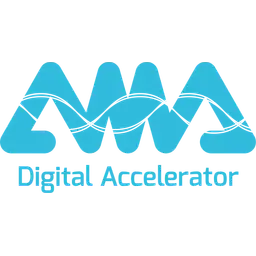- SEO
SEO Agency
Take advantage of the first traffic acquisition lever by entrusting your SEO to a digital agency experienced in SEO. - SEA
SEA Agency
Grow your business quickly with paid search (SEA).
- Social Ads
Social ads
Optimize your social media advertising campaigns to improve your performance.TikTok adsGo viral with your ads on TikTok

- Agency
The agency
Keyweo was born from the desire to create an agency that meets the principles of transparency, trust, experience and performance.
- Blog
- Contact
Google Penalty
Home > SEO Agency > SEO Glossary > Google Penalty
Definition
A Google penalty refers to the situation where a website faces penalization from the Google team, resulting in a significant decrease in website traffic and a reduction in visibility within the Search Engine Results Pages (SERPs).
Although informally, any noticeable drop in rankings (such as after an update) on the search engine results pages are often titled as a penalty, a further distinction is actually made here. A real Google penalty can only be imposed manually by the Google team. Traffic losses that are due to a new Google update are algorithmic changes that affect your website.
When does Google impose a penalty?
Within search engine optimization, there are numerous techniques to increase the visibility of your website and many strategies to climb to the top of the search results. While search engines such as Google understand the importance of presenting valuable content with engaging and relevant information on your website, some SEOs also use other tactics that do not comply with Google’s user-oriented guidelines.
This primarily includes unnatural link building by trading backlinks, creating doorway pages, cloaking, private blog networks and many other measures that fall under black-hat SEO. In addition to Google updates, which ensure that the search results are cleaned of spam websites or websites with low-quality content several times a year, there is also a Google team that manually looks at individual websites. If the team finds plausible evidence that your website violates Google’s guidelines, it will impose a Google penalty on you.
Users of the search engine also have the option of contacting the Google team as soon as something seems suspicious to them. For example, this could be in the form of a misleading title that leads to an unrelated website.
For example, if a person is looking for good running shoes, they click on a title such as “The best running shoes 2023 in test”. If this person is then taken to an online casino website, they can report this to the Google team because this page is obviously misleading the users. Google’s “Quality Raters” then check this case. If the user’s concerns are confirmed, the site receives a penalty.
How do I recognize a Google Penalty and which ones exist?
If you have received a Google penalty, you will receive a notification in your Google Search Console. There you will find a message under Security & manual measures → Manual measures. This informs you about the penalty and roughly describes the cause of the penalty. However, the exact problem areas are not described. If the Google team has penalized a website with an unnatural link profile, they will give the reasons for this, but will not name all the links that are affected.
Your entire website is not always affected by this penalty. There are basically four different types of penalties.
Keyword level
This is where the Google team recognizes that there have been violations in connection with certain keywords. These are then penalized and removed from the positioning. If this affects keywords that play a central role in your business model and have previously earned you good positions in the SERPs, this could have fatal consequences.
URL or directory level
URLs can also be penalized by the Google team. They are either deleted from the index or banned to the last positions. This can sometimes lead to entire directories being affected.
Domain or subdomain level
If the violations of the Google guidelines affect an entire website, this can also be penalized. This can lead to massive problems, especially if websites are dependent on search engine results, as the domain will be banned from the rankings.
Indexing or delisting
In the event of massive violations, the Google team can remove a domain from the index completely. In this case, the page is completely deleted from Google’s positioning and the page has little chance of generating traffic.
Manual versus algorithmic penalties
As already mentioned, it’s not always just a Google penalty imposed by the team that causes your website to suffer a sharp drop in traffic. Sometimes it can also be that a new Google update leads to this. This is known as algorithmic penalties. But here too, unnatural link building, spam or low-quality content on a website may be penalized. There were two updates in particular that were extremely significant in Google’s history. The Google Panda and the Google Penguin update.
Google Panda
Google released the Panda update in 2011, and it had a huge impact on the visibility of websites in the search results. This update focused on positioning high-quality pages in the top positions of the SERP. In turn, websites that had previously been able to successfully implement their SEO strategies had to contend with traffic losses. Duplicate content, dubious backlinks, lots of advertising or keyword stuffing on a page were thus penalized with severe position losses.
Google Penguin
The first Google Penguin update took place in 2012 and focused primarily on the link profiles of websites. The aim was to avoid spam. Websites that had previously linked artificially, received links from unnatural sources, or simply received numerous backlinks leading to their site too quickly had a good chance of being negatively affected by this update.
Nowadays, there are Google Core Updates, which are published three to four times a year. They combine measures from both updates and thus ensure that the search engine results pages are continuously cleansed of low-quality websites. If you notice a drop in your traffic after such an update, this could be due to an algorithmic penalty.
What are the consequences of a Google penalty?
Receiving a penalty from Google is feared by many SEOs. For this reason, strategies have changed considerably over the last decade. Nowadays, the trend is to create as much qualitatively unique content as possible. Links are tried to be built naturally and sustainably and words such as “duplicate content”, “cloaking” or “keyword stuffing” have become warning signals in the ears of every professional.
Because a penalty should be avoided at all costs. Loss of position is usually guaranteed to lead to a loss of traffic. If you take a look at the breakdown of clicks on the first three positions in the SERP, this becomes even clearer. While over 50% of the users click on the first position, positions 2 and 3 are almost entirely split between the remaining percentages. From position four onwards, it becomes difficult to get valuable clicks. If a URL, a keyword or perhaps even the entire domain is penalized, this means that the clicks here are close to zero, which in turn also means that users will not convert on your site.
If your business relies on the results of SEO, this can lead to a massive loss of revenue.
How do you react to a Google penalty?
Google imposes a penalty, and now what? Don’t worry, a penalty doesn’t mean that you won’t get your usual traffic back. Google is willing to give you back your positions as long as you remove previous violations and adhere to the guidelines.
As mentioned above, Google is reluctant to reveal more specific details of the penalty. However, there are still some hints. Use these clues and analyze your entire website. For example, if your penalty affects your link profile, you can take a close look at all inbound and outbound links. In the case of content-related penalties, devote your time to content optimization. Also think about what SEO measures have been carried out on your website in the recent or distant past in order to get to the root of the problem.
Once all errors have been rectified, a reconsideration request can be submitted to Google. This request describes all the measures that have been taken to clean up the site. The Google team then decides whether the page will be released from the penalty.
Bear in mind that, depending on the violation of the guidelines, it may take several weeks to process the application. It is also often the case that your first request is not approved. In this case, it makes sense to process the measures on your website a second time before submitting another reconsideration request. It is not uncommon for it to take several requests to have the penalty canceled. After that, you have a good chance of regaining your old positions in the SERPs.
Is it possible to recover from an algorithmic penalty?
Even after an algorithmic penalty, it is possible to regain previous positions. However, this may be a little more difficult because you are solely dependent on Google’s crawlers, which reassess a website after crawling it again. In addition, more analysis work is also involved because Google does not give you any clues as to where the problem might lie.
If you notice negative changes in your figures after a new Google Core Update, you should first wait and observe how the traffic and your positions in the SERP change for a few days. This is because sometimes subsequent updates are sent out that could stop the declines. If this is not the case, you should take enough time to look for the cause of this algorithmic penalty. Keep in mind all the SEO measures that have happened on your website in recent months.
Then react by gradually cleaning up your link profile, optimizing content and removing possible violations of Google guidelines from your website. In this way, you will gradually return to your usual positions. To be able to maintain these positions in the long term, also make sure to avoid all black hat strategies in the future.
How do you avoid being penalized by Google?
Whether manual or algorithmic: If you pursue honest SEO strategies, the chances of being affected by a penalty are relatively low. It makes sense to follow a few tips and tricks.
Qualitative, unique content
Even if the offers from various content spinning platforms or artificial intelligence such as ChatGPT sound tempting, you should focus on creating high-quality content yourself. Process information from various sources, incorporate your own expertise, and write engaging content for your users. This is certainly the more labor-intensive way, which takes more time, but still protects you from penalties and traffic losses.
Be careful when building links
A link profile is there to be built up naturally. This is how Google measures the trustworthiness of your site. Buying and selling links is against Google’s guidelines. So instead of trading links, try to offer such high-quality content on your website that other websites link to yours because of your expertise.
Vary the anchor texts
If websites that link to yours use a single keyword as anchor text, this can be a sign of spam for the search engine. Instead, try to vary the anchor texts to give users enough information about the website in the anchor text.
Avoid black hat SEO strategies
What used to be common practice among SEOs is unfortunately no longer in line with the guidelines prescribed by Google. For this reason, it is important to avoid all black-hat SEO strategies if possible. These include, among others:
- Duplicate content: This refers to copying content from other websites.
- Cloaking: Here, one content is created for the search engine and another for the user.
- Hidden text: Text is placed in the same color as the background on a website so that it is not visible to users.
- Content spinning: Content is used to create more unique content with the help of tools that use synonyms.
- Keyword stuffing: The keyword is used excessively on a page so that texts hardly make sense.
- Doorway pages: Similar to cloaking, a second page is created that is not visible to users and serves as a bridge to another page.
- Private blog networks (PBN): A network of blogs created solely to place high-quality links on other sites.
If you stay away from these measures, it is very unlikely that you will be penalized by the Google team or the algorithm.
The most popular definitions
keyword cannibalisation
keyword
google EAT
google penalty
position zero
positioning report
301 redirection
rich snippet
google sandbox
google suggest
featured snippet
google knowledge graph
Boost your Visibility
Do not hesitate to contact us for a free personalised quote
Notez ce page







